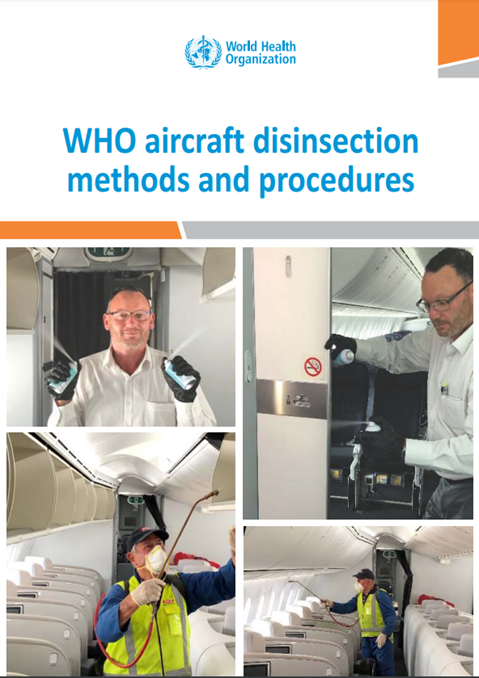WHO aircraft disinsection methods and procedures

Overview
ARCHIVED PUBLICATION |
The document describes the latest methods and procedures for aircraft disinsection and updates the formal publication on aircraft disinsection published by WHO in 1995. Aircraft may introduce insect vectors to locations in which they were not previously present. In addition, insect vectors may transmit infection to people in places served by aircraft (e.g. “airport malaria”). Mosquitoes act as vectors of pathogens that cause a number of serious diseases, such as malaria, dengue, Zika virus disease and yellow fever. Aircraft are disinsected to protect countries from the introduction of potential disease vectors and to help prevent the spread of pathogens borne by mosquitoes and other vectors. Each country should, in liaison with the departure country, assess the requirements for disinsection of arriving aircraft, taking into consideration various risk factors described in the document.
The guidance describes the methods and procedures for effective disinsection, but it is not intended to cover all issues related to aircraft disinsection comprehensively. The regulatory aspects of approval of products for aircraft disinsection and occupational risk assessment, for example, are beyond its scope. The document addresses only the control of arthropods (mainly insect vectors of disease) inside the cabin and cargo hold of aircraft. Separate guidance is available for surveillance and control of vectors in and around airport premises. Although the prevention of importation of agricultural pests is beyond the scope of this document, many countries may require aircraft disinsection for this purpose.
The guidance is for use by the airline industry, airport authorities, national pesticide regulatory agencies, the pesticide industry, public health and pest control organizations, aviation authorities and other stakeholders.
Requirements for aircraft disinsection are determined by national authorities at the arrival destination. WHO recommendations can only be advisory to national authorities. WHO recommends that national authorities implement measures requiring airlines to adhere to the new procedures for aircraft disinsection from no later than three months after the date of communication of this document by WHO to its Member States. |
Excel calculation files:
